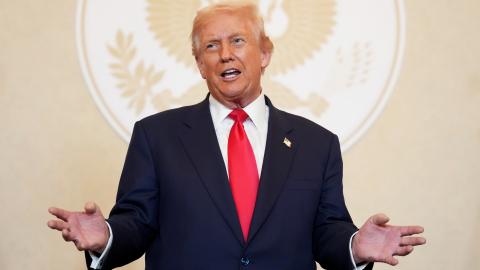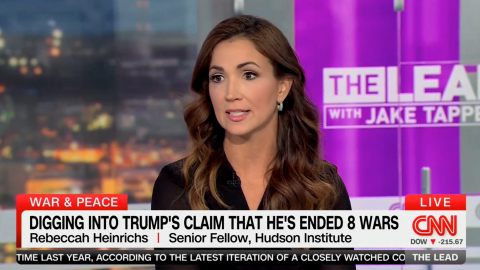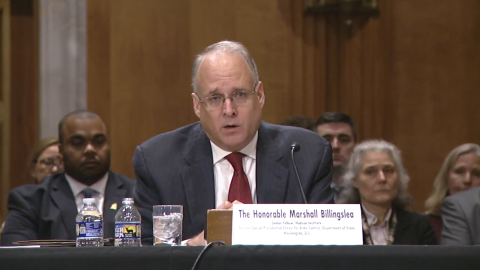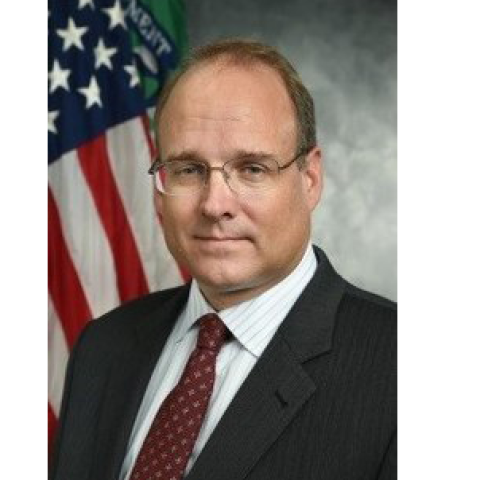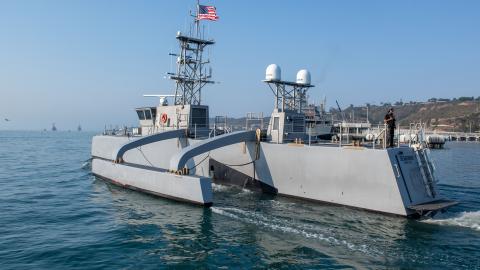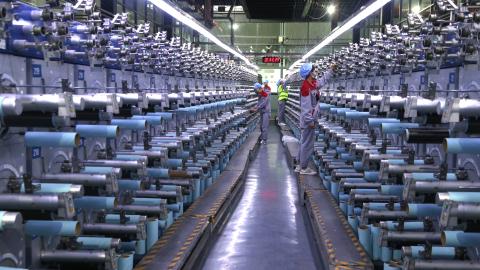Around 10 years ago, the United States began a historic shift in its grand strategy toward China, abandoning the belief that engaging Beijing would liberalize its regime and integrate it into a U.S.-led world order. It was a fragile but significant turn, the result of an accumulation of concerns that ideally would usher in a more effective U.S. strategy.
And it did — in many ways, even more dramatically than expected. President Donald Trump forced a rethinking of China policy as no conventional leader could. Then came the Biden administration, which repudiated many Trump policies but kept his approach to China largely intact. This prompted a thousand headlines about Washington’s new hawkish bipartisan consensus on China and the likely dawn of a New Cold War.
And yet nine months into the second Trump term, Washington is not adopting a Cold War posture toward Beijing. The second Trump administration has taken a soft line on issues from TikTok to semiconductor export controls to Taiwan, with little pushback from Congress or the public.
The great American rethink on China hasn’t been as great as many of us thought — or hoped — would be. The last decade has seen no “Sputnik moment” of national awakening and mobilization. The reasons are varied. Three decades of integration weren’t going to be undone quickly. China presents complex problems that are not easy to solve and political leaders are prone to distraction and division. But there are even deeper challenges. After decades of foreign policy missteps, failed wars, deindustrialization and the covid debacle, public trust has eroded. Americans today doubt America’s strength, competence and virtue. Isolationism finds adherents on both left and right. So, increasingly, does a harder-edged self-loathing that sees America as the world’s villain and harshly opposes the projection of American power.
The great American rethink on China, in other words, has unfolded alongside a great American rethink on America. The latter weighs on the former, weakening our ability to unite around causes, define objectives, make hard choices, commit resources and sustain efforts. The original Cold War began in the triumph, strength and confidence of the post-WWII era. The new Cold War is being born in a time of doubt, strain and retrenchment. This imposes real constraints.
It is only prudent to assume that the current mood won’t go away soon. While Americans have shaken off malaise before — and Trump’s June strike on Iran’s nuclear program defied expectations of isolationist limits — today’s doubts run deep. Hoping for a unifying “Sputnik moment” is unrealistic (even as we hope to avoid a “Pearl Harbor moment” that would spur national mobilization only at dreadful cost). Our task, therefore, is to build a sustainable strategy for great-power competition that works amid doubt and division.
For starters, U.S. leaders should focus on modest goals tied to domestic renewal, goals like preserving U.S. sovereignty, deterring China from risking war over Taiwan and preventing Chinese dominance in strategic sectors. Competition with China should be framed as defending American interests rather than seeking to transform China into a friendly power.
Policymakers should be explicit about the bigger task at hand. Just as the Pentagon names China as its “pacing threat,” other agencies should adopt a similar north star. Trade and rulemaking should account for China-related concerns. And to the extent possible, these policies should have specific, measurable targets. For example: reducing active pharmaceutical ingredient dependence on China from more than 85 percent to 50 percent by 2030; cutting critical mineral import dependence on China from 80 percent to 50 percent by 2030; and securing a 30 percent share of leading-edge chip manufacturing by 2030.
Technology helped America win the Cold War and will be central again. America started the original Cold War as the world’s leading techno-industrial power and maintained that lead throughout that period. Today, China already outpaces the U.S. in key strategic and commercial domains, especially energy — in no small part because U.S. regulatory barriers hinder the development of new energy supplies and slow industrial momentum. Policymakers need to identify strategic technological sectors where we have an advantage we need to preserve, where we are behind and need to catch up, and ultimately how to out-scale China in partnership with our allies.
We also have to be clear-eyed about the risk of war. Failure to deter is more expensive than preparedness. Today we spend some 3 percent of GDP on defense — far below the Cold War average. Leaders must make a persuasive case for stronger investment in hard power.
Finally, amid this broad crisis of belief, we need to cultivate faith in America’s capacity to do big things. Some patriotic innovators and investors are starting to build companies explicitly in the national interest, in fields like weaponry, energy and advanced manufacturing. We need similar initiatives to take hold in finance, media and academia.
Civic education will be more important than ever. As President Ronald Reagan warned: “Freedom is a fragile thing and it’s never more than one generation away from extinction. It is not ours by way of inheritance; it must be fought for and defended constantly by each generation, for it comes only once to a people.”
